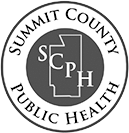FAQ's Stay Safe Ohio Order
Q: What is the Stay Safe Ohio order?
A: The Stay Safe Ohio order is a mandate from Ohio Department of Health Director Amy Acton, M.D. MPH, that modifies the previous Stay at Home order, reopens businesses with exceptions, and details COVID-19 prevention requirements for operating businesses.
Q: Why is the Stay at Home order being changed? Why are certain closed businesses permitted to reopen?
A: Due to the actions of Ohioans to stay home and limit COVID-19 exposure, it is possible to begin to lift the restrictions that were put in place to slow the spread of the disease and preserve critical healthcare resources in the event of a surge in cases. If the situation continues to improve additional restrictions may be lifted. If the situation deteriorates, new restrictions will have to be imposed.
Q: What businesses are opening?
A: Businesses in the manufacturing, distribution, and construction industries are authorized to open May 4; general office environments are authorized to open May 4. Consumer, retail, and service locations are authorized to open May 12; however, retailers who limit operations to curbside pickup, delivery, or appointment only (limited to 10 customers at a time) are permitted to open as of 11:59 p.m. May 1. Healthcare providers are now able to resume non-essential procedures, and essential businesses currently operating are permitted to remain open.
Q: What remains closed?
A: Establishments in the following categories remain closed except for minimum basic operations: K-12 schools; childcare; restaurants and bars (except for carry-out and delivery services); personal appearance/beauty; older adult day care and senior centers; adult day support or vocational habilitation services in group settings; and entertainment/recreation/gymnasiums. A more detailed list can be found here.
Q: What’s the situation with facemasks?
A: People with COVID-19 can transmit it even if they have no symptoms and are unaware they have the disease. Because of this, customers, clients, visitors, and other guests are strongly encouraged (but not required) to wear face coverings in retail locations and other workplaces. Employees at all workplaces must wear face coverings unless they are prohibited by law or regulation; in violation of documented industry standards; not advisable for health reasons; in violation of the business’s documented safety policies; or there is a functional/practical reason not to wear one. They also are not required for employees who work alone in an assigned work area.
Q: Will I be safe when I go to work or go shopping?
A: Employers are being held to several protocols intended to protect workers, customers, clients, and other visitors from COVID-19. Some examples are remote working requirements, sanitation rules, social distancing requirements, rules for hand-sanitizer, and requirements to offer separate hours for the most at-risk. When you go out, wear a cloth face covering and stay at least 6 feet from all others. If you are 65 or older, have an underlying medical condition, such as asthma or lung disease, a heart condition, obesity, diabetes, kidney disease, liver disease, or are immunocompromised, stay home as much as possible, except for medical care.
Q: Can I move forward with my postponed elective procedure?
A: Yes. Healthcare providers, including dentists, can resume non-essential surgeries and procedures, which typically do not require overnight or inpatient stays and use minimal persona protective equipment (PPE) for healthcare workers. These may proceed as long providers abide by certain requirements, including those for using telehealth whenever possible; controlling infection; preserving protective equipment for healthcare workers; testing for COVID-19; and informing patients of COVID-19 risk. Other healthcare care services also can continue.
Q: Do I still have to stay home?
A: Ohioans must stay home except for work or other needs. The new order balances the need to revive the economy with the need to keep residents safe from COVID-19 illness and death. The easing of some restrictions has been made possible by the sacrifice and effort of Ohioans, and additional stabilization or improvement will allow for the lifting of additional restrictions. It is important to continue staying home to protect one another and to prevent a reversal of progress. People who have COVID-19, sometimes without showing any symptoms, can pass the disease on to two or three other people without knowing it. A spike in cases will not only lead to more COVID-19 deaths but could overwhelm the healthcare system, leaving workers unprotected and unable to provide the best care possible to all patients.
Q: Can I resume parties, play dates, and gatherings and visits?
A: No. Public and private gatherings outside a single household or family unit are prohibited. Gatherings of more than 10 people are prohibited. Weddings and funerals are excepted from this requirement, but receptions are not. Other exceptions are gatherings to exert First Amendment rights, religious facilities, and members of the news media.
Q: Are there restrictions for visitors?
A: Yes. People diagnosed with COVID-19 are not permitted to enter the state except for medical care, unless they are a permanent resident of Ohio. Other people entering the state are asked to self-quarantine for 14 days upon arrival, unless they are entering for critical infrastructure or healthcare work. This does not apply to people who live in Ohio and work or deliver services in another state.
Q: What can I do to protect myself if I go to work?
A: Wear a face covering. Whenever possible stay at least 6 feet from other people. Wash your hands often, try not to touch your face, and frequently disinfect work areas and high-touch items in your workplace with disinfecting cleanser. Don’t share work materials or equipment, especially equipment used near the face. Don’t congregate with others in breakrooms or other areas. Avoid public or shared transportation if possible. Monitor yourself for COVID-19 symptoms and stay home if you experience any or otherwise feel sick.
page updated 10-07-2020
